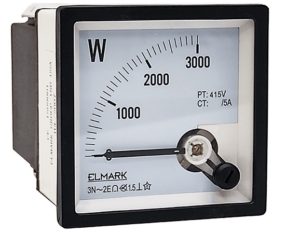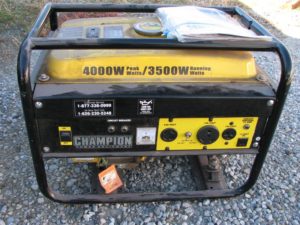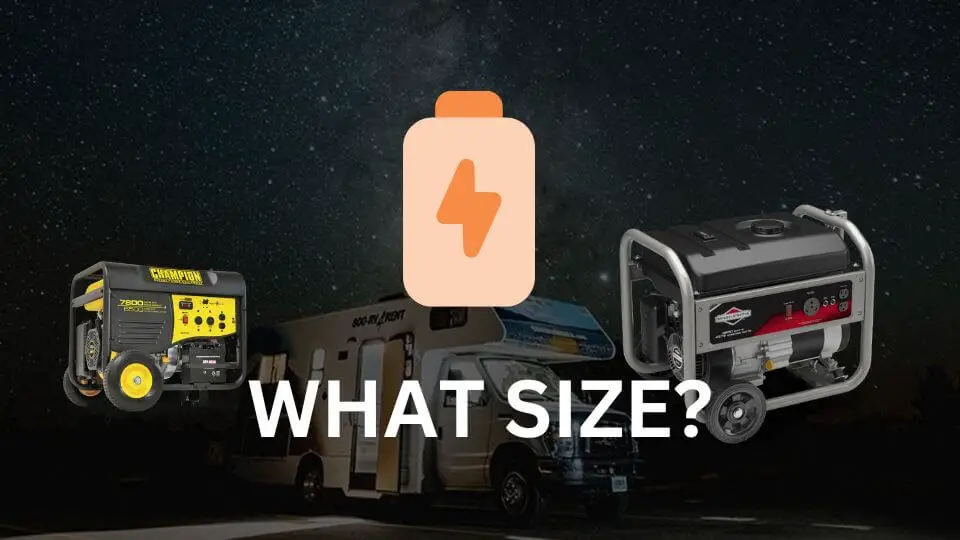This post may contain affiliate links. As an affiliate, we earn from qualifying purchases. We get commissions for purchases made through links in this post.
The Starting Watts is the peak power the generator can provide momentarily to start up a motor. The Running Watts is the continuous power that it delivers. The first term can also be called a “Surge current”, while the second term is a “Rated current”.
Every portable generator has a marking with Running Watts power and Start-up (or surge power). You must consider these values when choosing a generator that can run a fridge, a washing machine, and most importantly power tools such as a circular saw. This is especially important if you’re planning to supply more than 1 power tool or an appliance with a motor using a single portable generator.
Starting vs Running Watts (provided by a generator)
A surge happens when you turn on a large appliance like a refrigerator, a washer, or equipment like an angle grinder, a circular saw, or a heat pump. This sudden spike in power consumption can be 2 to 5 times bigger than the rated power of this electric device.
A generator could easily get overheated if the load is close to or equal to a value of Running Watts. Thanks to a circuit breaker, this doesn’t happen and you can enjoy safe usage of your generator for many hours.
Having said that, any portable or standby generator can provide a higher amount of Watts for a short period of time (2-5 seconds) which is enough to start an electric motor. This is the so-called “Starting Watts” or a “Peak Power” that a generator is able to produce.

How to calculate the wattage of an appliance?
The wattage equals an amperage multiplied by voltage (W = A x V). For example, if the power tool or appliance requires 5A (Ampere) and 120V(Volts) to run, then, after multiplying 5 by 110, the resulting wattage of such device is 550W.
However, the example above is related to Running Watts. We, already know that the Startup Watts is 2-5 times higher than Running Watts. So, how do you calculate the Startup Watts for an electric device?
For some appliances like refrigerators or a freezer, this can be straightforward, as these have the LRA (Locked Rotor Amperage) specified on their rear side. In this case, just take the LRA (in Amperes) and multiply it by Volts as in the previous example and you will get the required amount of Running Watts to start up the device.
Now, not every appliance will have the Running Amps (LRA) specified on its casing. In that case, refer to your owner’s manual or search for the specific model’s specifications on a manufacturer’s website to find out the exact number of Watts. If neither sources have the Starting Watts available, you can measure it by yourself using a Wattmeter.

How many starting Watts does a refrigerator use?
Most modern fridges require a surge power of 500 to 2,000 Watts. This depends on a size of a fridge, a year of production, a model, and a brand.
An average home refrigerator with a freezer requires 700-800 Watts to start. The newest models might require just 400-500 Running Watts.
How many running Watts do I need for a portable generator?
When you are looking for a portable generator, it is important to select one that has the same or higher Starting Watts than those needed by your appliances. This will ensure that your generator will allow you to launch such devices.
For example, if you have an electric motor with a starting watt of 2,500W, then make sure the portable generator is able to deliver at least 2,500W peak power, or, even better – 3,000 Watts. This will allow you to safely use a power tool or an appliance with a powerful motor while not having to disconnect some other devices with smaller consumption just to be able to start a single device with higher consumption.
The best way to choose a powerful enough portable generator is to make a list of all the equipment that you wish to run simultaneously, using a single generator, and sum up every device’s Startup Wattage.
For example, if you have 2 devices that require 1,800 and 2,500 Watts of Startup current respectively, the total amount of Startup Watts required by your generator is 3,400 or, even better 4,000. Do not forget to also add the Running Watts of every additional electrical device that will be connected to the same generator.
So, to summarize, if you have 3,400 Starting Watts required by 2 electrical devices, plus two smaller devices 100 and 50 Running Watts each, then the total Starting Watts required from your portable generator is 3,400 + 100 + 50 = 3,500W. In this case, a generator with 3,500 Starting Watts (or even better the one that delivers 4,000W) of Peak Power is going to suffice.

Conclusion
So, what is the difference between starting watts and running watts? The Starting Wattage of a generator is the maximum amount of electrical power that it can produce for a short period of time. This is usually 1,000 to 2,000 Watts higher than the running wattage, which is the amount of power that the generator produces when it’s running normally.
When you’re choosing a portable generator that can run all your equipment, you need to take every single device’s Starting and Running Watts into account. Alternatively, if you’re often experiencing power outages, consider installing a whole-house generator that can run all your equipment simultaneously and for extended periods of time.



